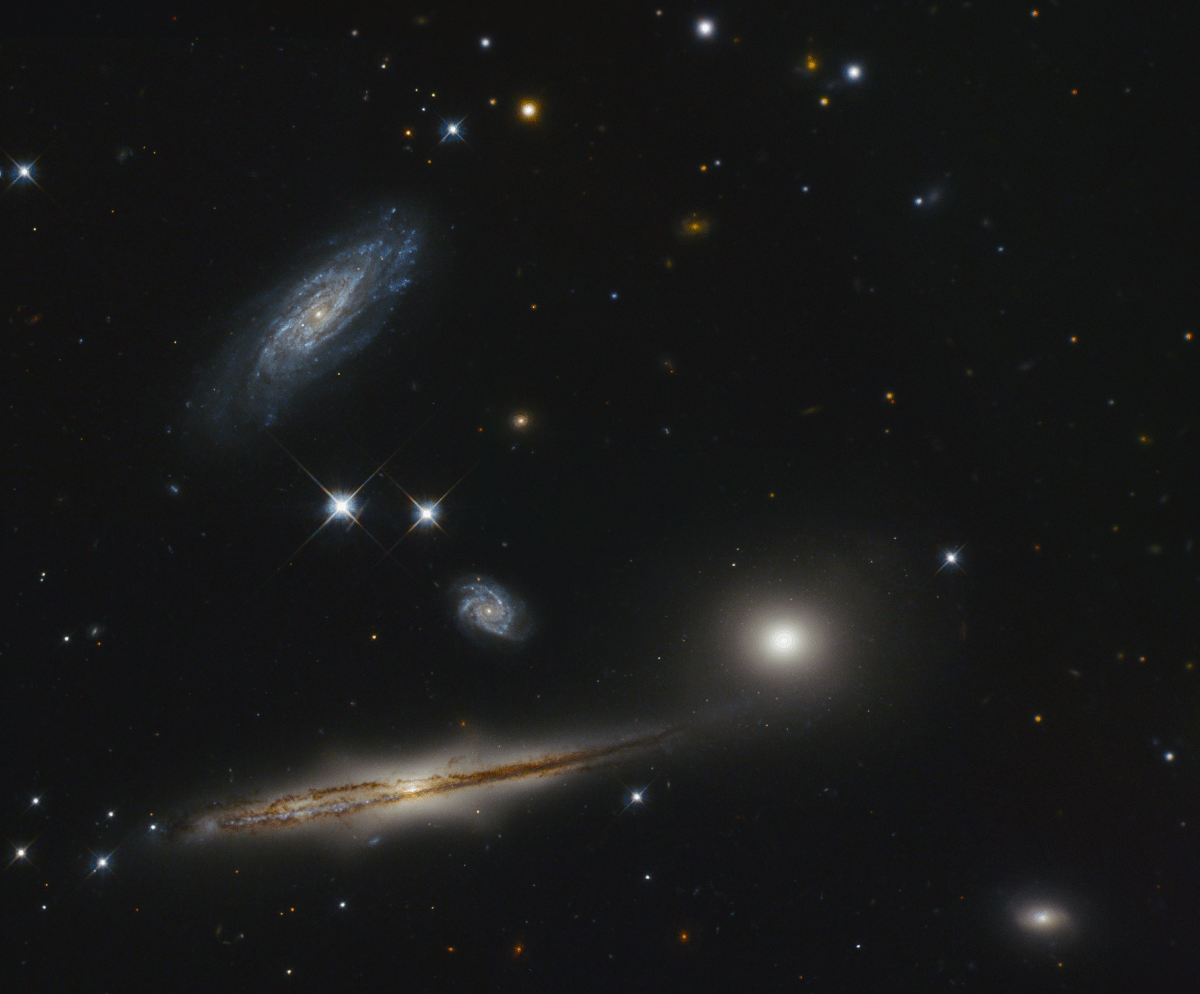The Cosmos with HCG 87
Here is a group of galaxies known as Hickson Compact Group 87 (HCG 87) in near-infrared and visible light. I combined datasets from Hubble’s WFPC2 and Gemini South’s GMOS to create a more complete picture of the group. The upper right corner and top and right edges, which you may notice are slightly fuzzier in appearance, come from Gemini, while the larger part of the image in the lower left comes from Hubble. The filter sets were not quite the same, but I found they blended together quite well regardless.
Despite the galaxies being apparently close together, interaction between them seems rather subtle to me, with the most obvious sign including a perturbation in the dust of the edge-on galaxy at the lower left of the image, which is called HCG 87a. This edge-on spiral is quite picturesque with its contrasting dust lane, prominent X-shaped nucleus, and blue streak of star formation.
Another member of the group, HCG 87b, is a large, bright elliptical galaxy seen to the right of HGC 87a. Striking to me about this elliptical are the numerous pinpoints surrounding it, which I assume to be a halo of globular clusters or something similar, like the cores of smaller galaxies that have long since merged with the elliptical. This leads me to conclude that HCG 87b is huge in size compared to the others, but must be more distant. Some faint, partial shells are visible in the upper right quadrant of the galaxy, hinting at some kind of interaction, perhaps an older one. Simulations have shown that shell features could form after ellipticals have taken in some smaller galaxy.
Hubble colors: Red: WFPC2 F814W + WFPC2 F675W Green: WFPC2 F555W Blue: WFPC2 F450W
Gemini colors: Red: i (780 nm) Green: r (630 nm) Blue: g (475 nm)
North is NOT up. It is 45.1° counter-clockwise from up.
